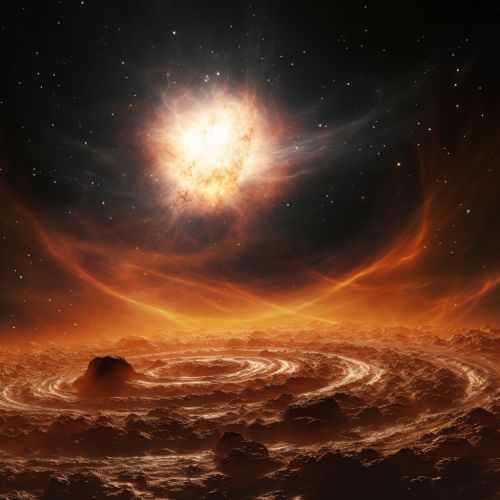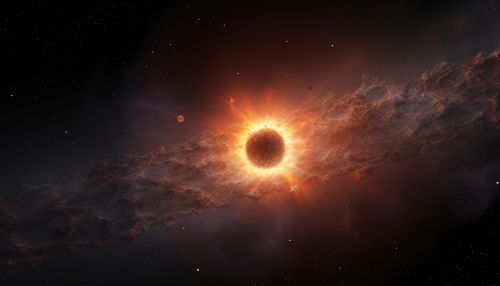Protoplanetary Disks
Formation
Protoplanetary disks, also known as circumstellar disks, are rotating circumstellar disks of dense gas and dust that surround a young newly formed star. The formation of a protoplanetary disk is a natural outcome of star formation. The conservation of angular momentum as the clouds of gas and dust that are collapsing to form a star causes the material to form a disk shape around the star. The material in the disk is in Keplerian rotation - it is moving faster near the star and slower further away. This is the region where planets are likely to form.


Structure
The structure of a protoplanetary disk can be divided into three components: the midplane, the surface, and the outer edge. The midplane is the region of highest density and is where most of the mass of the disk is concentrated. The surface of the disk is directly exposed to starlight and is therefore warmer and less dense than the midplane. The outer edge of the disk is the boundary between the disk and the interstellar medium.
Composition
The composition of a protoplanetary disk is primarily hydrogen and helium, with trace amounts of heavier elements and compounds such as water, methane, and silicates. The exact composition can vary depending on the initial conditions of the star formation process and the subsequent evolution of the disk. The dust in the disk is composed of tiny solid particles, which can stick together and form larger aggregates. These aggregates can eventually grow into planetesimals, the building blocks of planets.
Evolution
The evolution of a protoplanetary disk is driven by a combination of processes including accretion onto the star, photoevaporation by the star's radiation, and the formation of planets. Over time, the material in the disk is either accreted onto the star, blown away by the star's radiation, or incorporated into planets. The lifetime of a protoplanetary disk is typically a few million years, after which the disk is dispersed and a planetary system is left behind.
Observations
Observations of protoplanetary disks provide valuable insights into the process of planet formation. They are typically observed in the infrared and submillimeter wavelengths, where the thermal emission from the dust in the disk is most intense. Observations with telescopes such as the Atacama Large Millimeter/submillimeter Array (ALMA) have revealed detailed structures in protoplanetary disks, including gaps and rings that may be the signatures of forming planets.
Protoplanetary Disk Studies
The study of protoplanetary disks is a key area of research in astronomy and astrophysics. It provides crucial information on the processes that lead to the formation of planets and the characteristics of planetary systems. Theoretical models of protoplanetary disks are used to understand the observations and to predict the outcomes of the planet formation process. These models are continually refined as new observations are made and our understanding of the physics of disks and planet formation improves.
